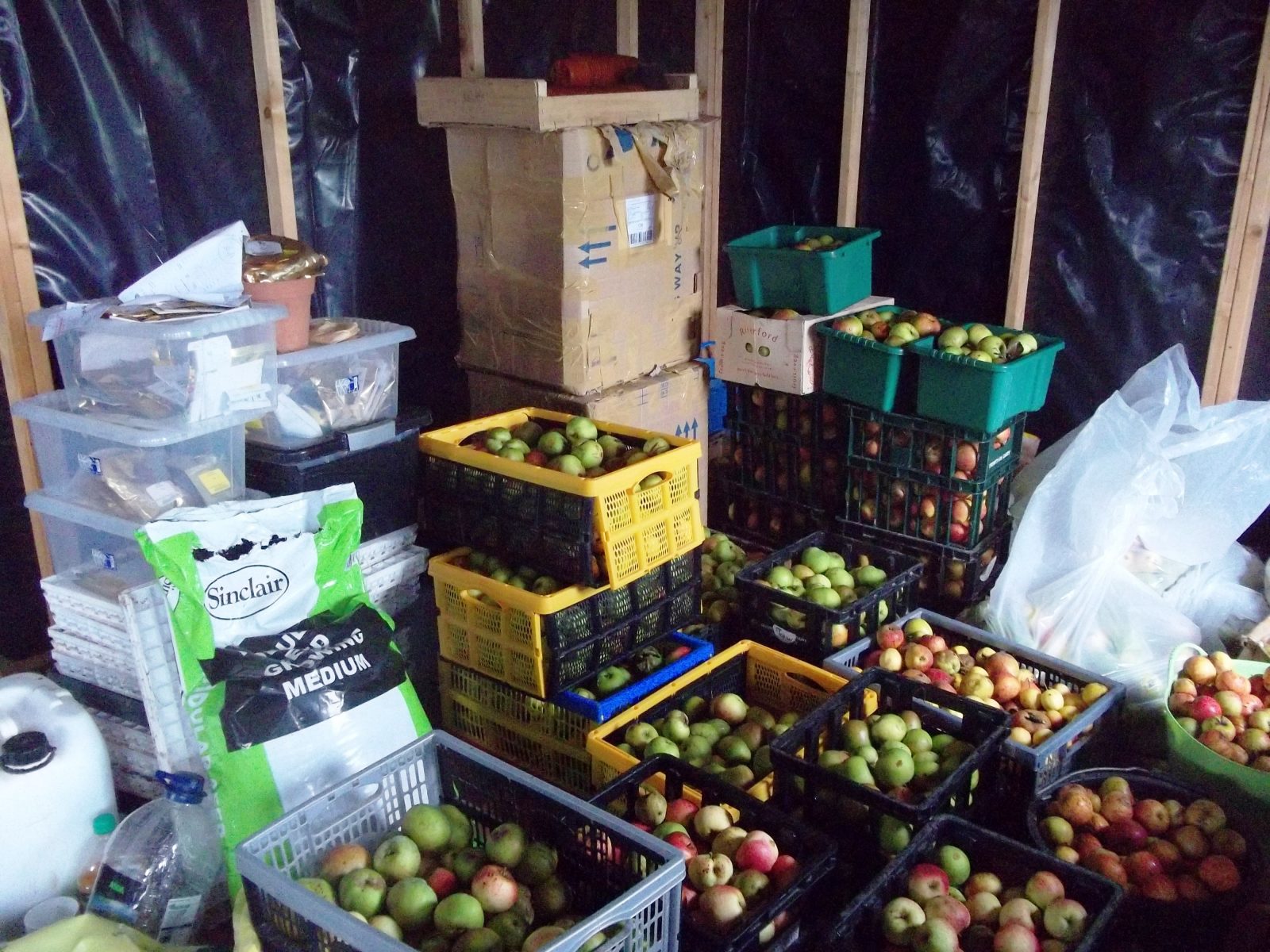
October 15, 2011
Camel CSA’s third annual Apple Day was our best ever – in spite of the Cornish mizzle. All ages pitched in to chop, crush and press around 90 litres of apple juice to share among everyone who took part.
We’ve had an abundance of apples to juice this year. Most were picked from our adopted orchard in St Mabyn, the rest came from members’ gardens.
Our team didn’t have the time or energy to press the entire mountain of fruit before the equipment had to go back to our friends at Chyan Community Field.
So we came to an agreement with the St Mabyn “Cider Boys” (don’t ask!) and we now have an extra 50 litres or so of delicious juice to share out.
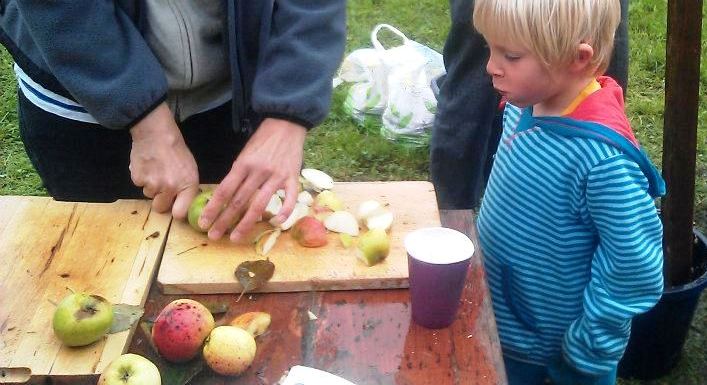
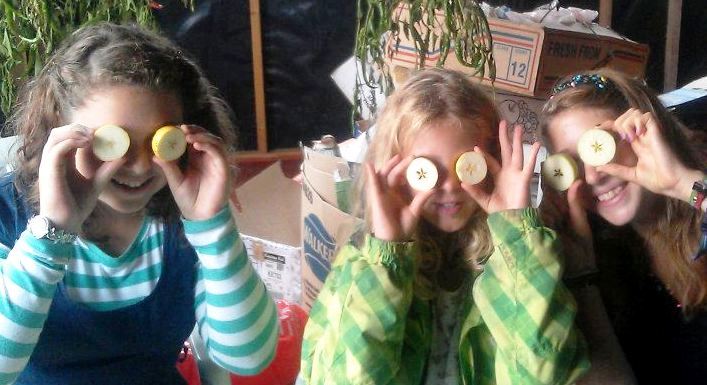
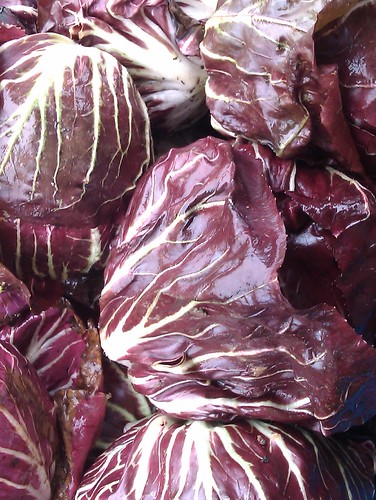
October 14, 2011
A member of the chicory family sometimes known as red chicory, radicchio has distinctive pink-red leaves with white veins. Its firm, cup-shaped leaves have a strongly bitter taste. It is generally used in salads mixed with other salad leaves. In its native Italy it is often served shredded. Alternatively, tear the leaves into bite-sized pieces. But there are also a number of recipes that make use of it cooked.
Yotam Ottolenghi cooks it lightly and mixes it with walnuts, lentils and honey for a tasty dish. And Sarah Raven has this recipe for Radicchio and lemon pasta in her Garden Cookbook which she says is quick to prepare and delicious cold the next day.
Serves 4
Preparation and cooking: about 15 minutes
Ingredients
100g chopped pancetta
2-3 tbsp olive oil
½ onion, chopped
1 garlic clove, finely chopped
200g dried egg tagliatelle
200g radicchio
3 tbsp dry white wine
50g butter
grated zest of 1 lemon
100ml double cream
handful of flat-leaf parsley, chopped
grated parmesan, to serve
salt and black pepper
Method
Bring a large pan of water to the boil. Put the chopped pancetta into a wide shallow pan over a moderate heat with half the olive oil. When the fat begins to run, add the chopped onion and garlic, and then cook with the pancetta for about 3-4 minutes, until the onion has softened.
Put the pasta into the pan of salted boiling water and cook until al dente.
Slice the radicchio into thin strips and add to the onion mixture with the wine and sauté until the radicchio begins to wilt. Add the butter and lemon zest; pour in the cream and season well. Add this to the drained pasta with the remaining olive oil and the chopped flat-leaf parsley. Finish with a generous topping of parmesan.
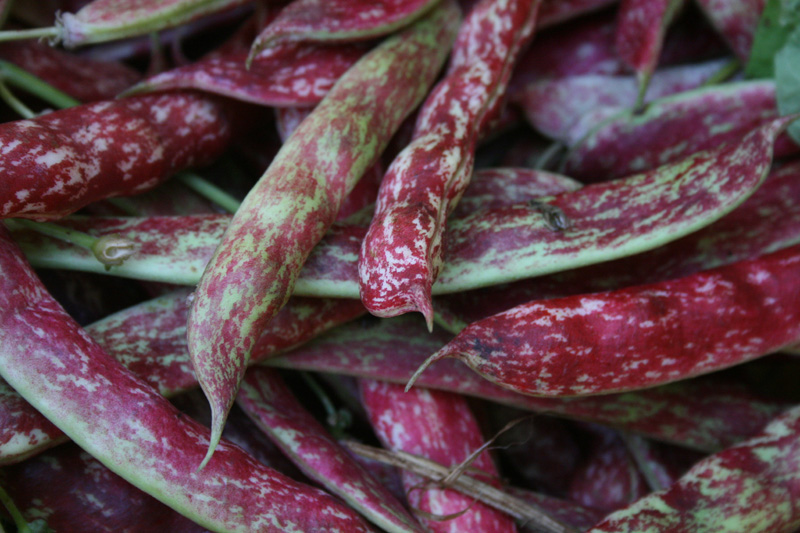
Once again, apart from the potatoes, everything’s from Camel CSA’s own plot in north Cornwall.
Everyone will have:
potatoes (Burlerrow Farm, St Mabyn)
* onions
* calabrese/purple sprouting broccoli
* tuscan/curly kale
* borlotti beans (these need podding; there’s a pasta recipe here and a herby one here)
* carrots
* sweetcorn
* tomatoes
* aubergine
* radicchio
* chillies

Standard boxes will also have:
* leeks
* beetroot
* sweet peppers
* turnips
* = grown to organic principles

October 7, 2011
The apples are harvested and the apple press is on its way.

We’re all looking forward to our third annual Cornish Apple Day on Sunday when we’ll be producing masses of delicious fresh apple juice to share.
Come and take part in the apple pressing on our community veg-growing plot between 10am and 1pm this Sunday 9 October. Find us here at St Kew Highway near Wadebridge in north Cornwall.
If you can bring any apples and a plastic juice container with you, all the better!

This moist and incredibly more-ish cake comes from Nigel Slater’s Tender Volume 1. The mixture turns a lurid pink colour when you add the beetroot, but tones down by the time it comes out of the oven.
If you want to save time and beat the eggs up whole rather than separating them first, it seems to make no difference to the quality. The only other tip I have is: Go easy on the icing – a drizzle will do. (But then I always say that!)
I shared the cake with friends on a glorious summer’s day beside the River Fal at Quay Cottage, Trelissick next to King Harry Ferry. It didn’t last long.
Serves 8-10
Preparation / cooking: 65-70 minutes
Ingredients
225g self-raising flour
½ tsp bicarbonate of soda
1 scant tsp baking powder
½ tsp ground cinnamon
180ml sunflower oil
225g light muscovado sugar
3 eggs
150g raw beetroot
juice of half a lemon
75g sultanas or raisins
75g mixed seeds (sunflower, pumpkin, linseed)
For the icing:
8 tbsp icing sugar
lemon juice or orange blossom water
poppy seeds
Method
Set the oven at 180C/gas mark 4. Lightly butter a rectangular loaf tin (20cm x 9cm x 7cm deep, measured across the bottom) then line the bottom with baking parchment.
Sift together the flour, bicarbonate of soda, baking powder and cinnamon. Beat the oil and sugar in a food mixer until well creamed then introduce the beaten egg yolks one by one, reserving the whites for later.
Grate the beetroot coarsely and fold into the mixture, then add the lemon juice, raisins or sultanas and the assorted seeds. Fold the flour and raising agents into the mixture while the machine is turning slowly.
Beat the egg whites till light and almost stiff. Fold gently but thoroughly into the mixture with a large metal spoon (a wooden one will knock the air out). Pour the mixture into the cake tin and bake for 50-55 minutes, covering the top with a piece of foil after 30 minutes. Test with a skewer to see if done. The cake should be moist inside but not sticky. Leave the cake to settle for a good 20 minutes before turning out of its tin on to a wire cooling rack.
To make the icing, sieve the icing sugar and stir in enough lemon juice or orange blossom water to achieve a consistency where the icing will run over the top of the cake and dribble slowly down the sides (about three teaspoonfuls), stirring to remove any lumps. Drizzle over the cake and scatter with poppy seeds. Leave to set before eating.
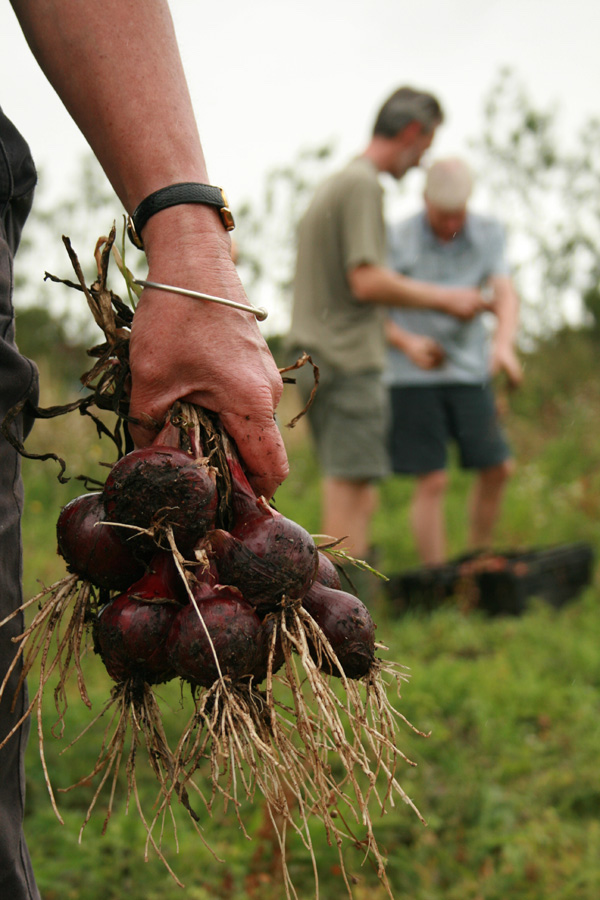
October 6, 2011
All our own produce again, apart from the potatoes. Everyone will have:
1kg potatoes (Burlerrow Farm, St Mabyn)
* runner/french beans (Camel CSA)
* beetroot (Camel CSA)
* leeks (Camel CSA)
* broccoli (Camel CSA)
* salad leaves (Camel CSA)
* tomatoes (Camel CSA)
* red onions (Camel CSA)
* garlic (Camel CSA)
* chillies (Camel CSA)
Standard boxes will also have:
* sweet peppers (Camel CSA)
* aubergines (Camel CSA)
* tuscan/curly kale (Camel CSA)
* turnips (Camel CSA)
* = grown to organic principles
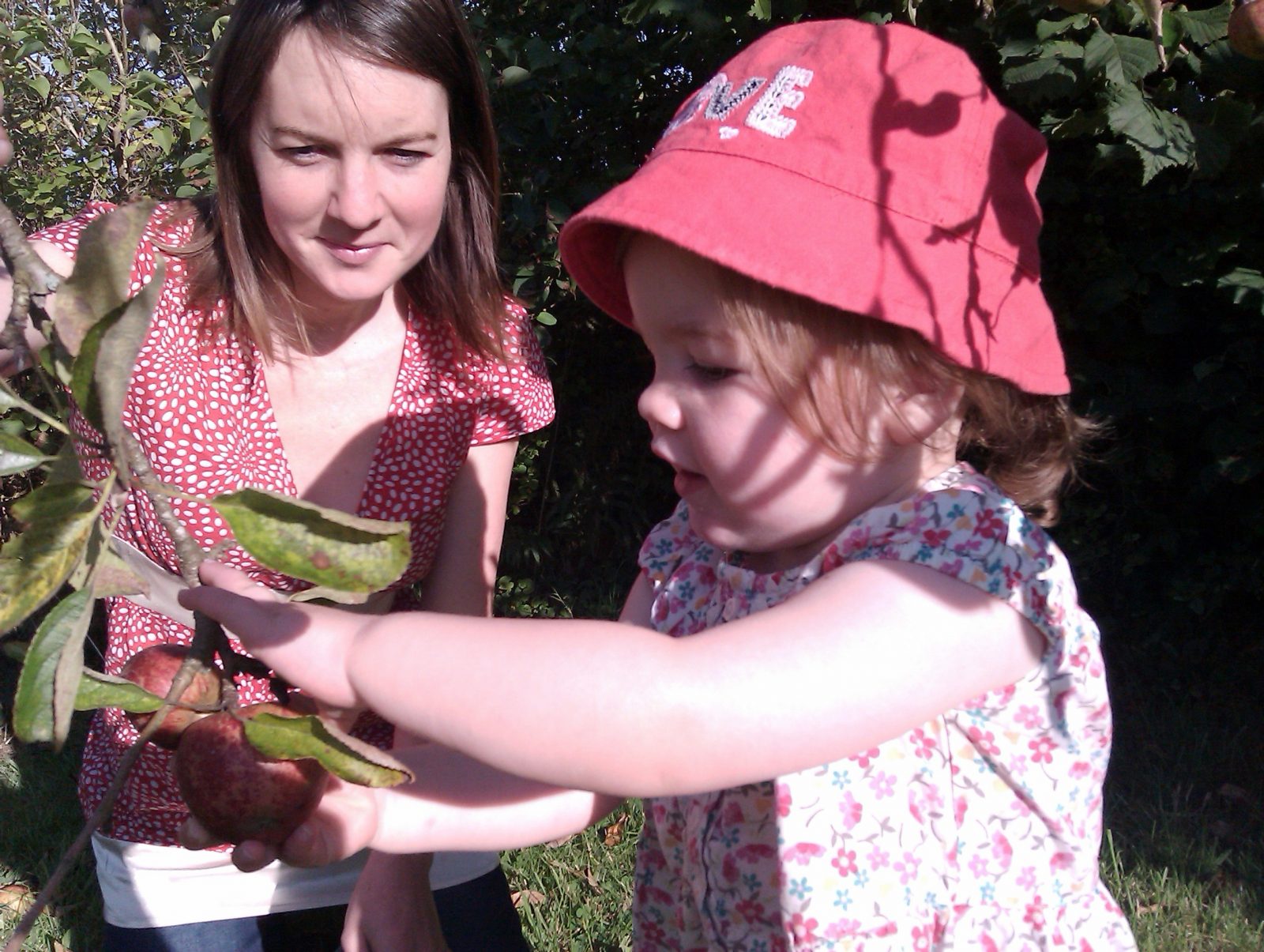
October 5, 2011
The apples are picked. We’re all set for Camel CSA’s annual apple juicing day this Sunday 9 October at our veg-growing site site in north Cornwall.
Now the fun part – everyone is welcome to come along and share our bountiful harvest. Juicing will go ahead on Sunday morning between 10am and 1pm on our community plot at St Kew Highway near Wadebridge.
This year we’re hiring an electric-powered crusher, lots of buckets and a large, Vigo hand press from Chyan Community Field near Penryn.
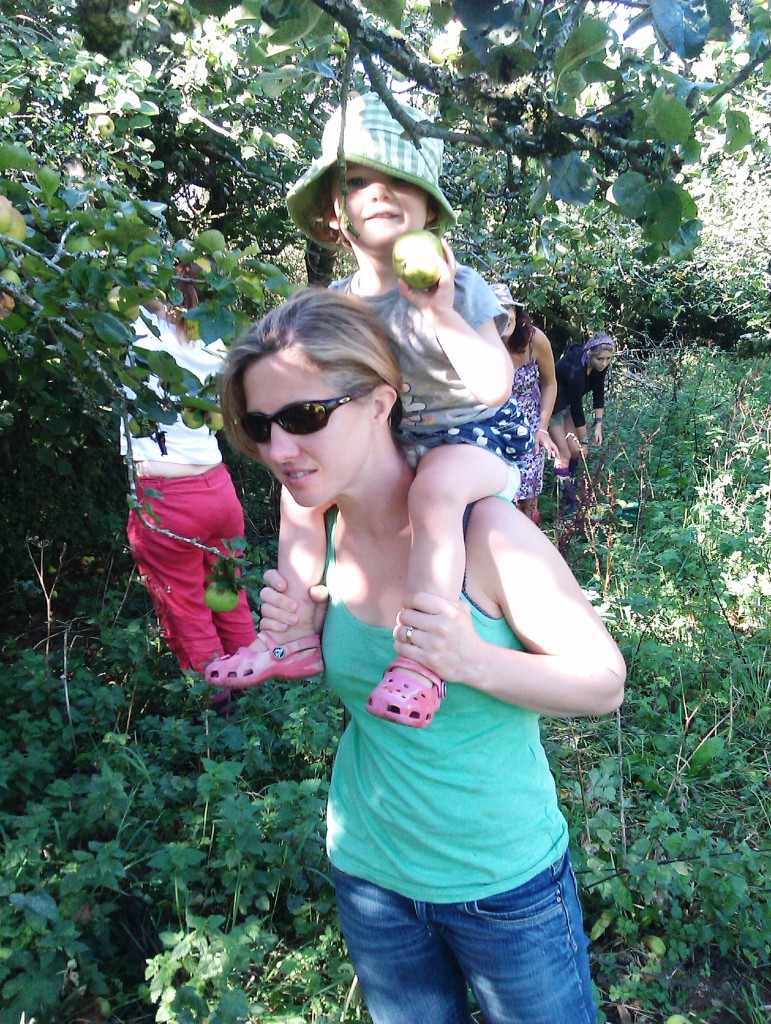
It means we’re no longer having to beg and borrow small, hand-operated presses and should make the whole operation much quicker and easier.
But it does mean we’ll need a lot of apples!
SO… we could aways use more. If you have any apples to share, or know anyone else with some to spare, please do let us know and arrange to get the fruit to us on the day.
AND…please can you all start putting aside containers for the juice. Most effective are 1-litre plastic milk containers, so the juice can be stored at home in the fridge for 48 hours or frozen. But please ensure they’re thoroughly cleaned out first!

A very enthusiastic bunch of families with young children harvested a vast number of apples in our adopted old farm orchard at St Mabyn. We managed to get the task done last Sunday – the final day of our short Indian summer.
Thanks a bunch to our apple picking and tree climbing team – Bob, Bridget, Cath, Charlotte, Dan, Danny, Gav, Geraint, Jane, Jenny, Kate, Kim, Mike S and junior members Arwen, Daisy, Finn, Hollie, Max and Seren.
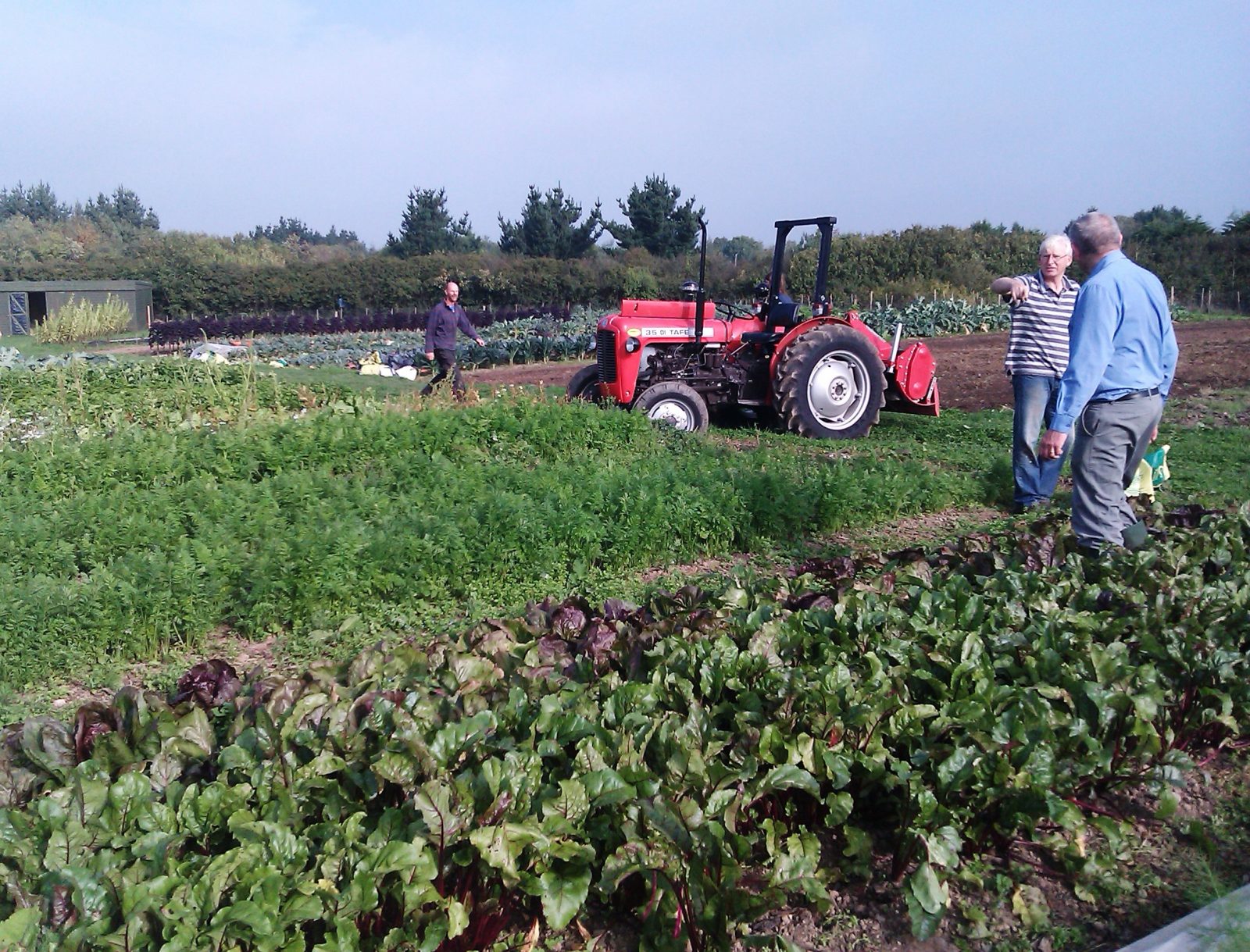
October 2, 2011
I’ve not long returned from a Soil Association conference where we looked at the future of community supported agriculture schemes in the UK, like ours in north Cornwall.
One of the recurring themes of any CSA get-together is: How do we attract volunteers? And, once they’ve started, how do we keep them on board?
Camel CSA is like any other voluntary group. We have a dedicated core membership who can be relied on a week-by-week basis to administer the project, grow the food and pick and pack the veg.
But what’s proved interesting is the total number of hours worked by volunteers – not just the regulars. And this total is always far more than we think.
We keep a tally to pass on to our funding bodies – Local Food and East Cornwall Local Action Group.
Over the last year half our members have actively volunteered at some point. They’ve contributed a total of 1,500 hours’ hard graft – the equivalent of nearly 200 working days. The highest point – equivalent to 25 working days – was in May . The lowest, not surprisingly, was in January (eight working days).

All this ties in with the work that Exeter University / Volunteer Cornwall researcher Becky Harrison is doing with us and other social enterprises in Cornwall. Her research into environmental volunteering and well-being involves looking into why people are motivated to volunteer and how they can make the most it.
All I know is that it’s important to remind volunteers how valued they are, to keep them informed, to include them in decision-making and to remind them that we’re all in it together.
Most of all, we need to remember that belonging to a CSA has all kinds of benefits. Which means making sure the dull and difficult jobs are not always done by the same people.
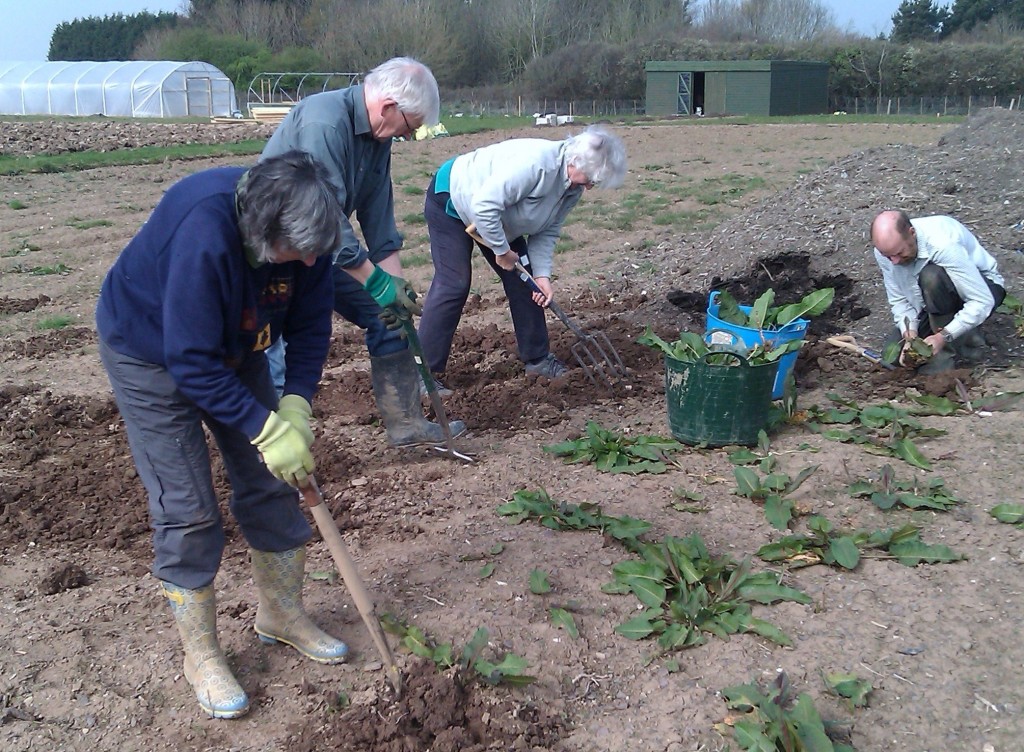

So a special mention for all the dock weed diggers, bean pickers and leek trimmers out there!
And grateful thanks to this week’s picking and packing team – Anne, Bob, Charlotte, Jax, Mike H, Mike S, Sophie, Steve, Sue, Trish F, Trish G and our expert growers Bridget and Mark N.
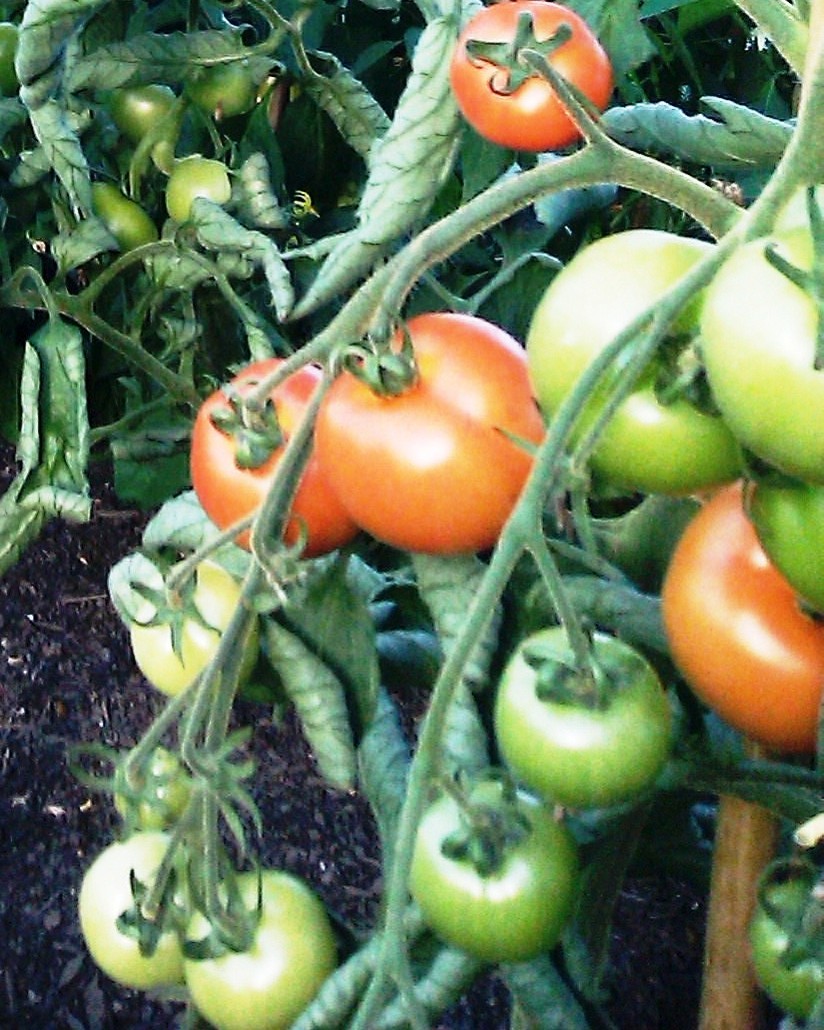
September 30, 2011
We have so many tomatoes in our weekly veg boxes at the moment we hardly know what to do with them!
Some of us are roasting the split, slightly over-ripe ones with garlic and onion, then whizzing them up into a tasty pasta sauce with basil and parsley from our veg boxes. Others are busy making green tomato chutney from the fruits that drop before ripening.
I keep the small, sweet cherry tomatoes in a bowl on the worktop and dip into them like sweets. The larger ones are so full of flavour they’re ideal for cooking.
This variation on the classic tomato gratin is from Lindsey Bareham’s new recipe collection The Big Red Book of Tomatoes.
Serves: 4
Preparation time: 15 minutes
Cooking time: 35 minutes
Ingredients
1kg tomatoes, ripe, full-flavoured cored, scalded, peeled and thickly sliced
150g wholemeal bread, without crust
2 medium onions, very finely chopped
1 very large clove of garlic, finely chopped
25ml flat-leaf parsley, finely chopped
30ml basil, finely chopped
6 tbsp parmesan, freshly grated
4 tbsp olive oil
25g butter
Pre-heat the oven to 200C/gas mark 6. Chunk the bread and process to crumbs in a food processor. Mix together the breadcrumbs, onion, garlic, herbs and parmesan, and season generously with salt and pepper.
Use 1 tbsp of the olive oil to grease an approximately 25cm x 5cm metal oven dish. Cover the bottom with a third of the bread mixture and top with half the tomatoes. Season, then dribble over a tbsp of the olive oil. Cover the tomatoes with another third of the bread mixture and then the remaining tomatoes. Season with salt and pepper and another tbsp of olive oil. Finish with the remaining third of bread mixture and dribble over the remaining olive oil. Finally, cover the bread with thin slices of butter.
Cook for 35 minutes in the middle of the hot oven or until the top is well-browned. Serve from the dish, cut like a cake using a fish slice. Dust with more parmesan.
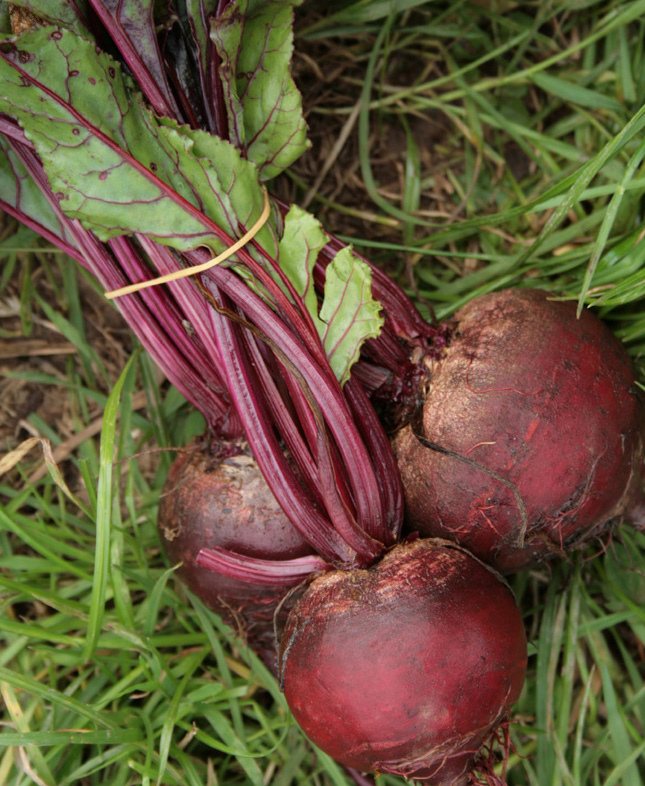
This week everyone will have:
1kg potatoes (Burlerrow Farm, St Mabyn)
* runner/french beans (Camel CSA)
* calabrese/sprouting broccoli (Camel CSA)
* tomatoes (Camel CSA)
* leeks (Camel CSA)
* beetroot (Camel CSA)
* swiss chard (Camel CSA)
* chinese cabbage (Camel CSA)
* onions (Camel CSA)
Standard boxes will also have:
* aubergines (Camel CSA)
* peppers (Camel CSA)
* radicchio (Italian chicory)(Camel CSA)
* parsley (Camel CSA)
* = grown to organic principles


